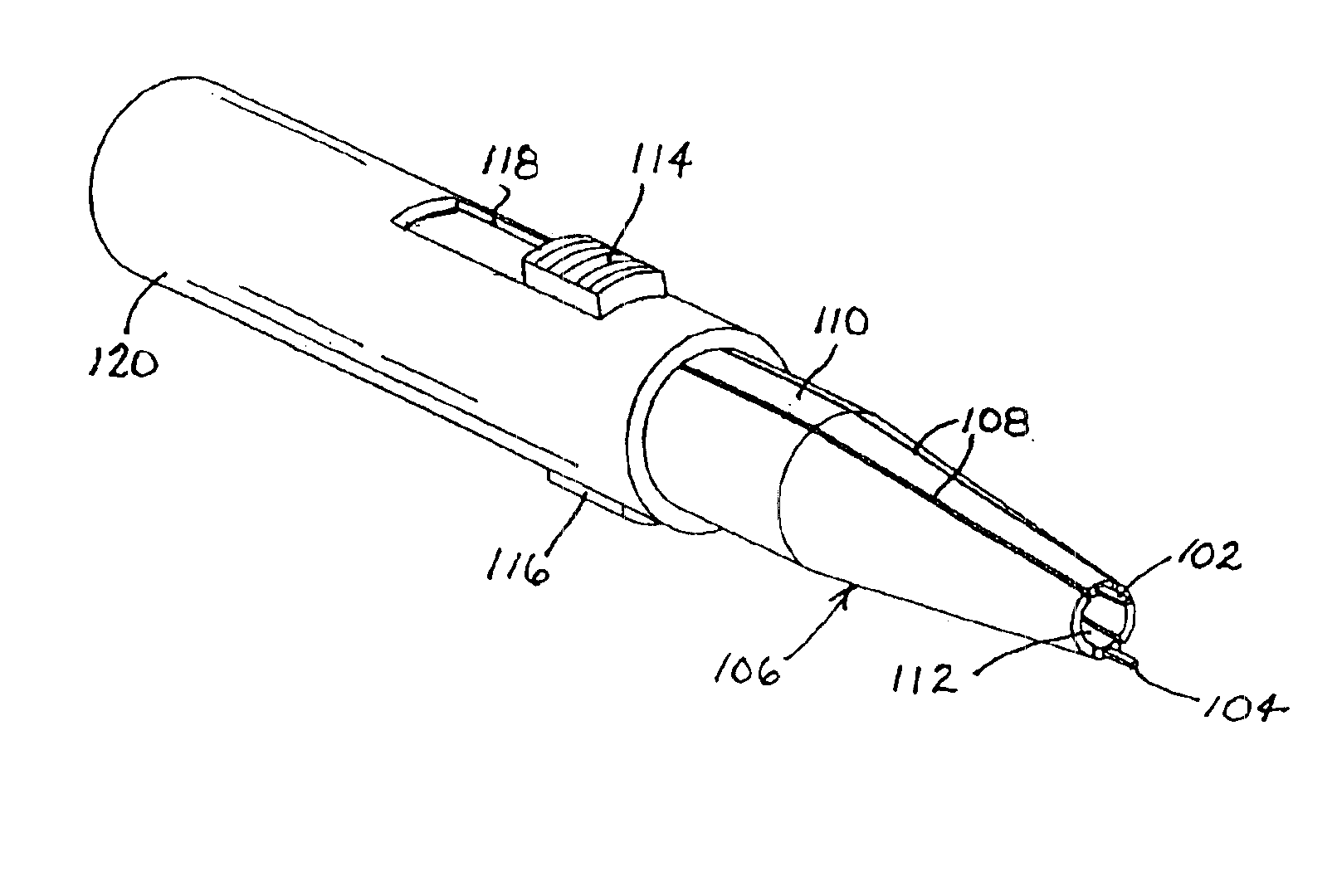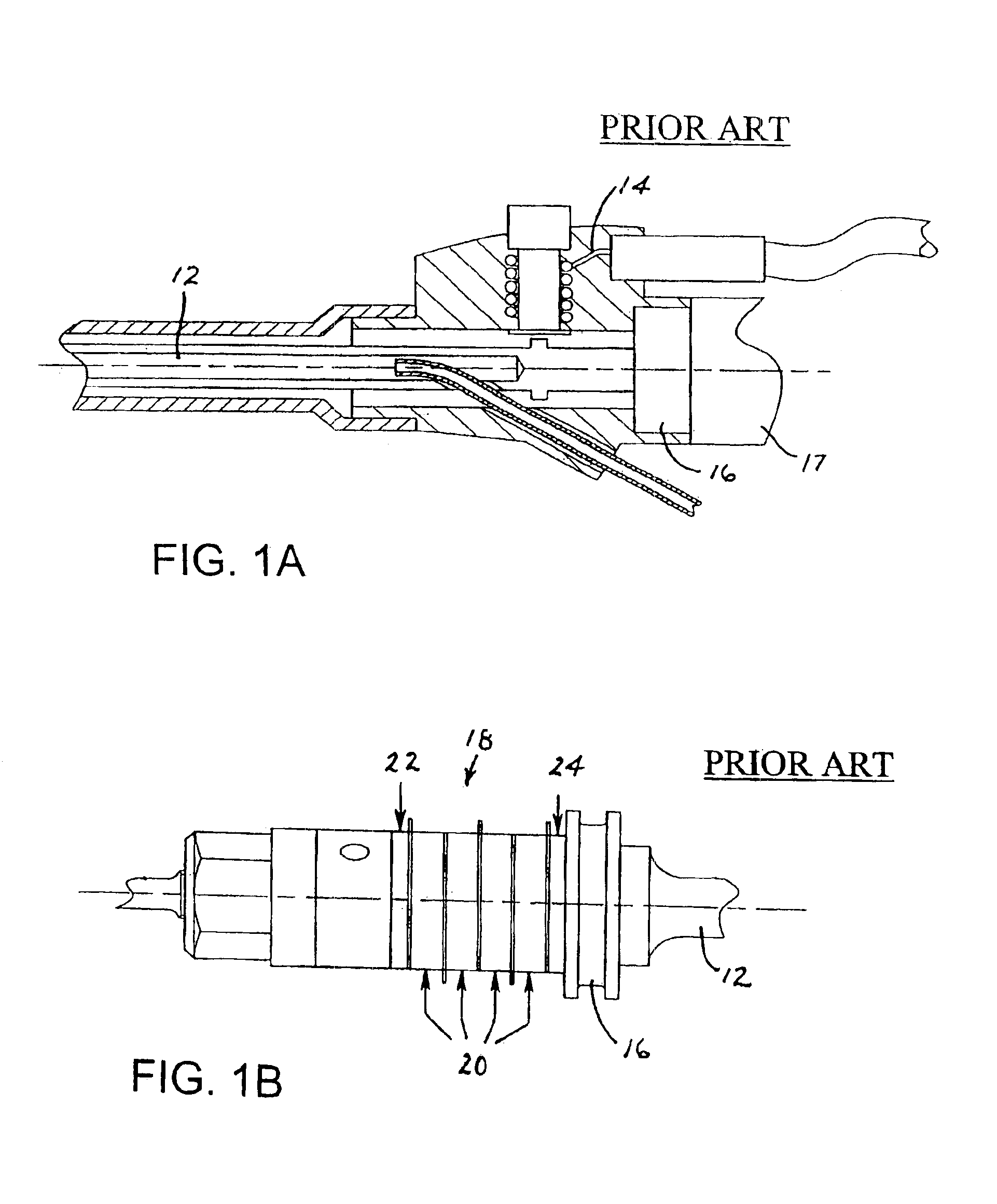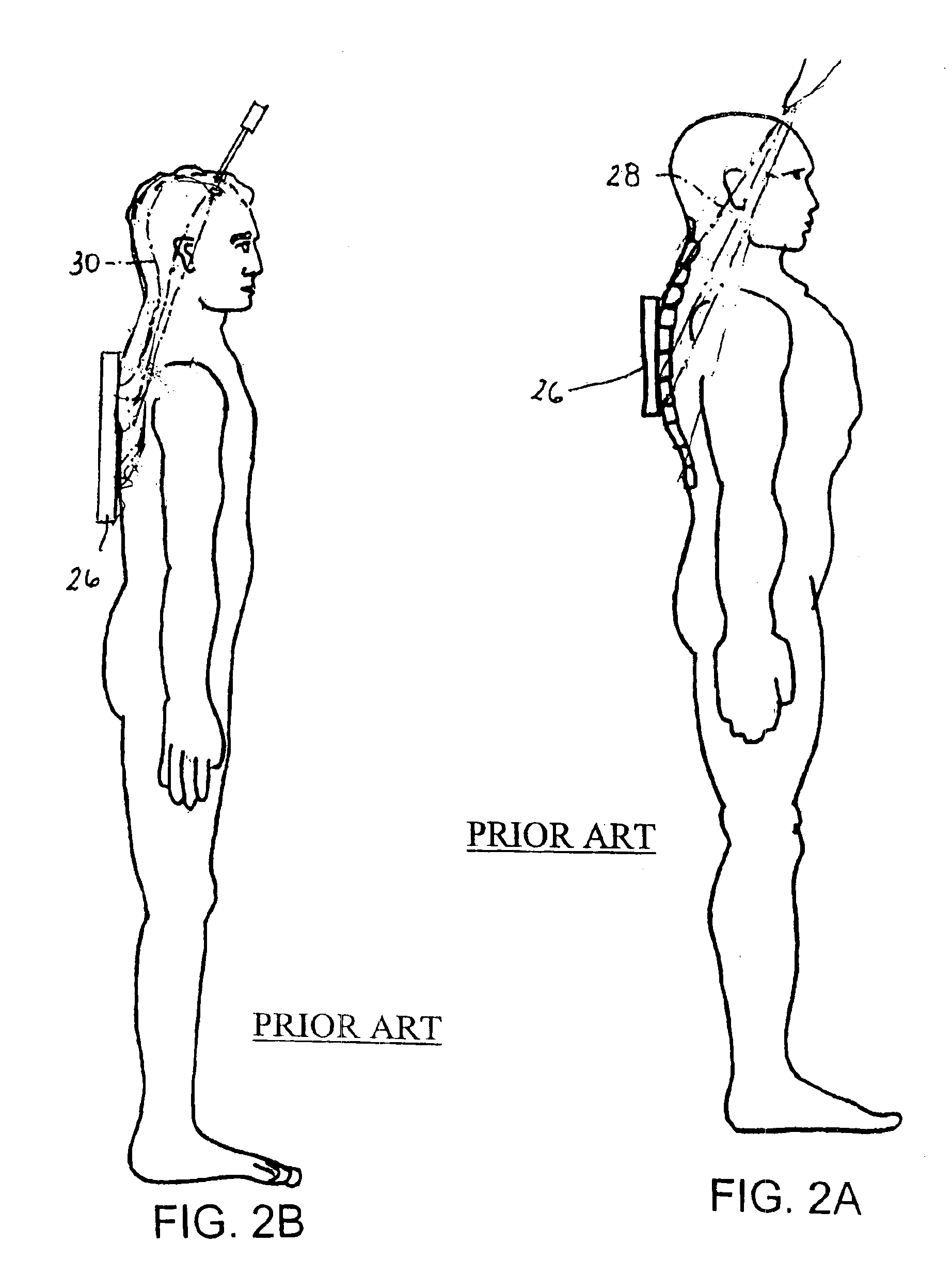Ultrasonic medical treatment device for RF cauterization and related method
a medical treatment device and ultrasonic technology, applied in the field of medical devices, can solve the problems of affecting the cauterization effect of capillaries, affecting the healing effect of patients, etc., and achieves the elimination of the deficiencies above-described in the conventional system, reliable cauterization effect, and convenient use
- Summary
- Abstract
- Description
- Claims
- Application Information
AI Technical Summary
Benefits of technology
Problems solved by technology
Method used
Image
Examples
Embodiment Construction
[0046]Disclosed herein are various hardware configurations that will allow bipolar RF cautery to be used on organic tissues at a surgical site simultaneously with or immediately after ultrasonic ablation of tissue. The electrical connections are isolated from the ultrasonic tool thereby allowing the piezoelectric crystals to be floating with respect to this potential.
[0047]In the prior art, as shown in FIG. 1A, an ultrasonic probe 12 is connected one pole of an RF cauterizer (not shown) by a wire 14. Alternatively, an electrode member, conductive O rings or other methods known to the art (none shown) may be used. In the embodiment of FIGS. 1A and 1B, a front driver 16 of the transducer is also rendered live, which necessitates that the metal parts be insulated from the grip or handle 17 of the instrument. If the transducer assembly 18 is of the electrostrictive type with piezoelectric crystals 20, the crystals must be electrically isolated from the front driver 16 by methods known t...
PUM
 Login to View More
Login to View More Abstract
Description
Claims
Application Information
 Login to View More
Login to View More - R&D
- Intellectual Property
- Life Sciences
- Materials
- Tech Scout
- Unparalleled Data Quality
- Higher Quality Content
- 60% Fewer Hallucinations
Browse by: Latest US Patents, China's latest patents, Technical Efficacy Thesaurus, Application Domain, Technology Topic, Popular Technical Reports.
© 2025 PatSnap. All rights reserved.Legal|Privacy policy|Modern Slavery Act Transparency Statement|Sitemap|About US| Contact US: help@patsnap.com



